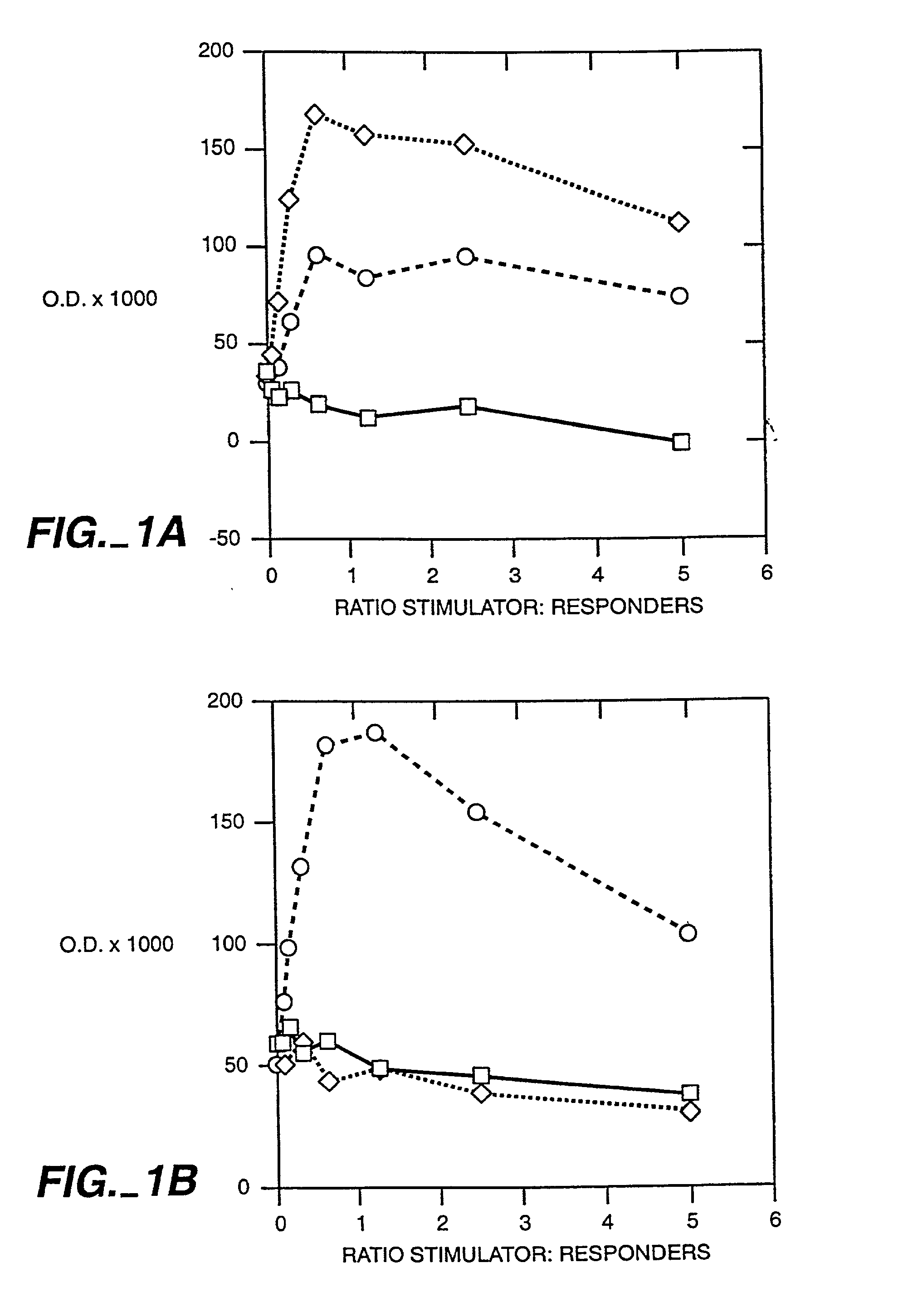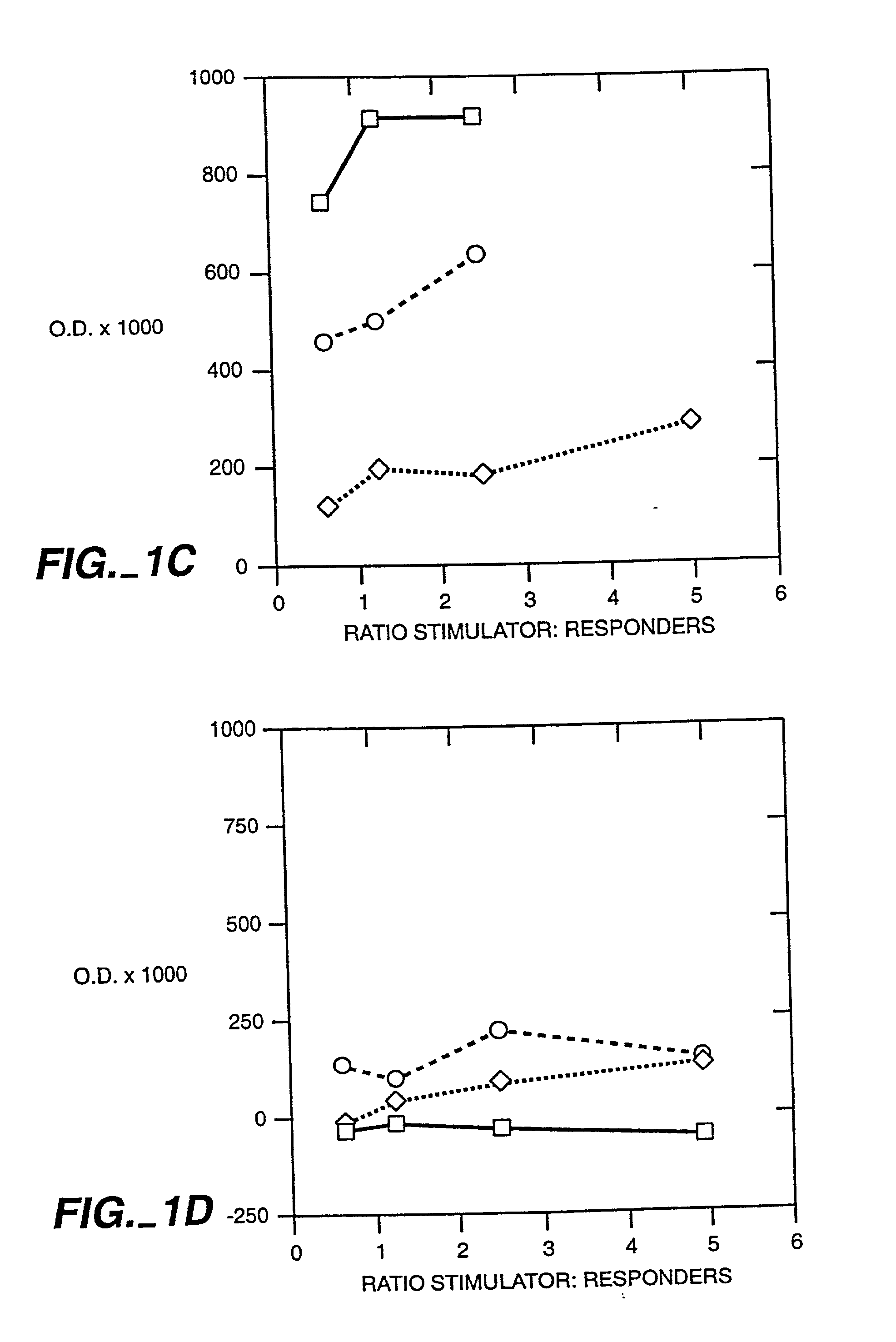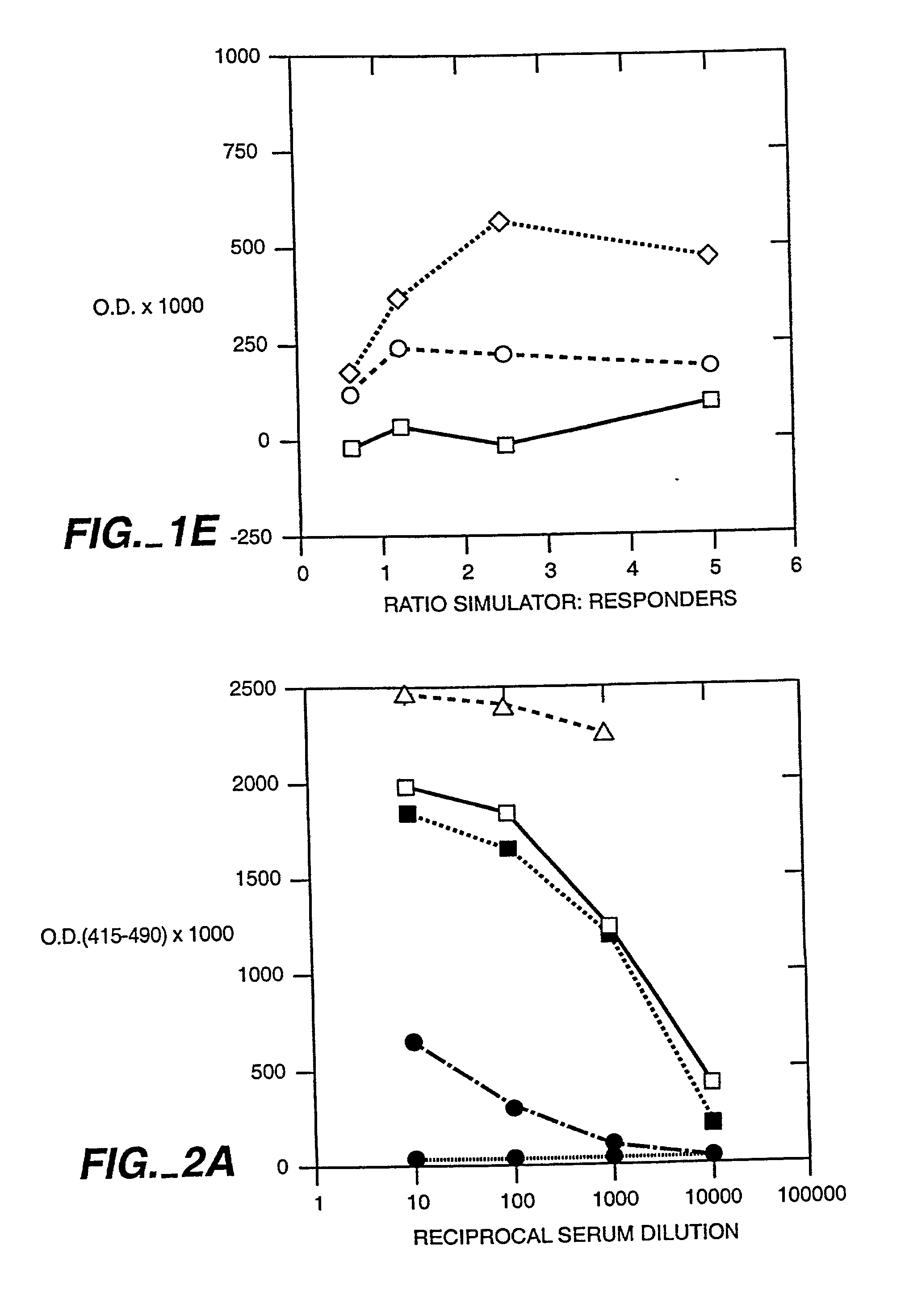Transgenic mammal capable of facilitating production of donor-specific functional immunity
a technology of donor-specific functional immunity and transgenic mammals, which is applied in the field of transgenic mammals, can solve the problems of difficult modeling of the course of human diseases outside of the human body, few methods for directly studying the pathology of human diseases, and many human diseases remain incurable, so as to increase the proportion of hematopoietic stem cells
- Summary
- Abstract
- Description
- Claims
- Application Information
AI Technical Summary
Benefits of technology
Problems solved by technology
Method used
Image
Examples
Embodiment Construction
[0048] It has been well established using a variety of model systems that thymic cortex epithelial cells perform the majority of the positive selection events that occur during T cell differentiation (Paul, ed. Fundamental Immunology, 4.sup.th Ed. (1999), Lipincott-Raven Press). Recently, attempts to further define the cell types involved in positive selection have revealed a dichotomy in the ability of CD4.sup.+ and CD8.sup.+ single positive cells to be selected by bone marrow (BM)-derived cells. It has been conclusively demonstrated that CD8.sup.+ T cells can be positively selected by hematopoietic cells using chimeric animals constructed on an MHC class I deficient background (Bix & Raulet, Nature 359:330-333 (1992)). However, the opposite result has been shown for CD4.sup.+ T cells using a similar model system employing irradiated MHC class II deficient mice (Markowitz, et al., Proc. Nat'l Acad. Sci. 90(7):2779-83 (1993)). These results suggest that selection events are more str...
PUM
| Property | Measurement | Unit |
|---|---|---|
| Tm | aaaaa | aaaaa |
| diameter | aaaaa | aaaaa |
| time | aaaaa | aaaaa |
Abstract
Description
Claims
Application Information
 Login to View More
Login to View More - R&D
- Intellectual Property
- Life Sciences
- Materials
- Tech Scout
- Unparalleled Data Quality
- Higher Quality Content
- 60% Fewer Hallucinations
Browse by: Latest US Patents, China's latest patents, Technical Efficacy Thesaurus, Application Domain, Technology Topic, Popular Technical Reports.
© 2025 PatSnap. All rights reserved.Legal|Privacy policy|Modern Slavery Act Transparency Statement|Sitemap|About US| Contact US: help@patsnap.com



